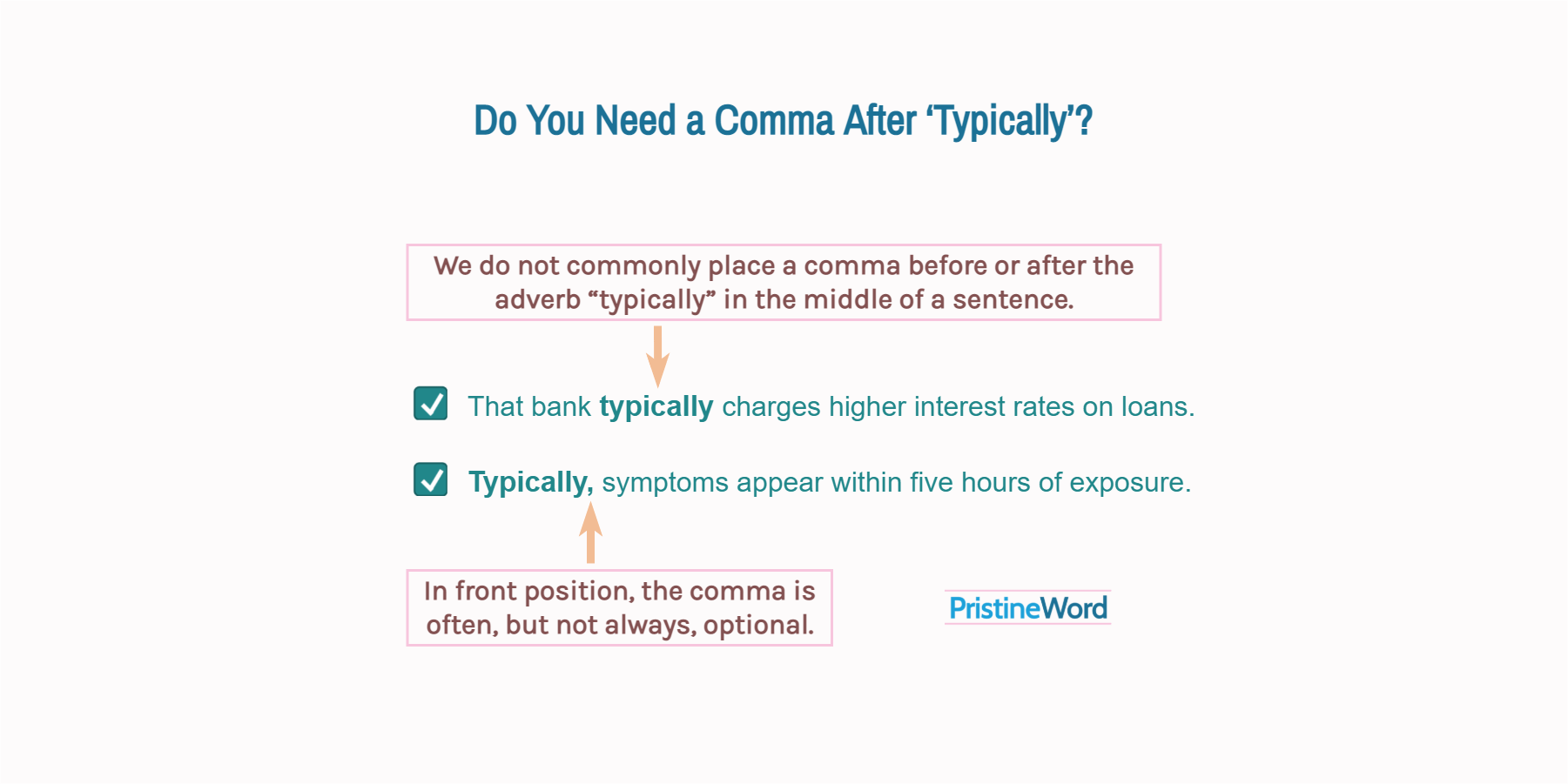We do not commonly place a comma before or after the adverb “typically” in the middle of a sentence.
We do not commonly place a comma before or after the adverb “typically” in the middle of a sentence.
Selected local restaurants are typically included in our travel programs.
In front position, the comma is often optional.
Typically, symptoms appear within five hours of exposure.
When using "typically" to introduce a phrase at the start of a sentence, add the comma after the entire introductory phrase.
Typically used to treat patients with severe pain, this medicine will help you sleep.
Contents
1. Commas With ‘Typically’ in Mid-sentence
When using “typically” to modify a verb in mid-position, we normally place it before the main verb, after the first auxiliary verb, or after the verb to be.
That bank typically charges higher interest rates on loans. (Before the main verb)
This procedure has typically been applied in an arbitrary manner. (After the first auxiliary)
The climate in this area is typically warm and humid. (After the verb to be)
We do not generally use a comma to separate the adverb “typically” from the verb, adjective, or another adverb it describes.
Those items will typically cost around forty dollars. (Modifying a verb)
Those items will typically, cost around forty dollars.
But you can find a comma before “typically” to set off a nonrestrictive phrase in mid-sentence.
Wisconsin, typically cold during the winter months, is a leading producer of ginseng in the US. (Modifying an adjective)
Our classes, typically very formal, leave very little room for questions and group discussions. (Modifying an adverb)
2. Starting a Sentence With Typically
You can also use “typically” in front position.
Typically, children are vulnerable to clever advertising.
2.1 Using ‘Typically’ to Modify the Main Verb
When using “typically” at the beginning of a sentence to modify a verb (“prefer” and “eat” in the examples below), the comma after it is often optional.
Typically consumers prefer lower prices.
Typically, Asian people eat rice every day.
But use a comma to eliminate ambiguity, clarify complicated sentences, or signal that the adverb describes the whole sentence that follows.
Typically, teens like hanging out with friends and playing video games rather than visit museums or attending book presentations.
When in doubt, use a comma to improve the readability of your writing.
Typically, highly intelligent people are skeptical and ask good questions.
2.2 Using ‘Typically’ to Introduce a Phrase
We can also start a sentence with “typically” to introduce a phrase. In this situation, we usually add a comma after the complete introductory phrase that follows.
Typically aimed at older adults, our programs offer social, creative, and physical activities in group settings that encourage personal interactions.
If the sentence is clear and the introductory phrase is short (less than five words), the comma is generally optional.
Typically created by experts this type of chart can display complex data sets.
But use a comma to avoid confusion, improve readability, or include longer introductory phrases.
Typically designed to address problems associated with poverty, these strategies aim to give more money to families who need it most.

